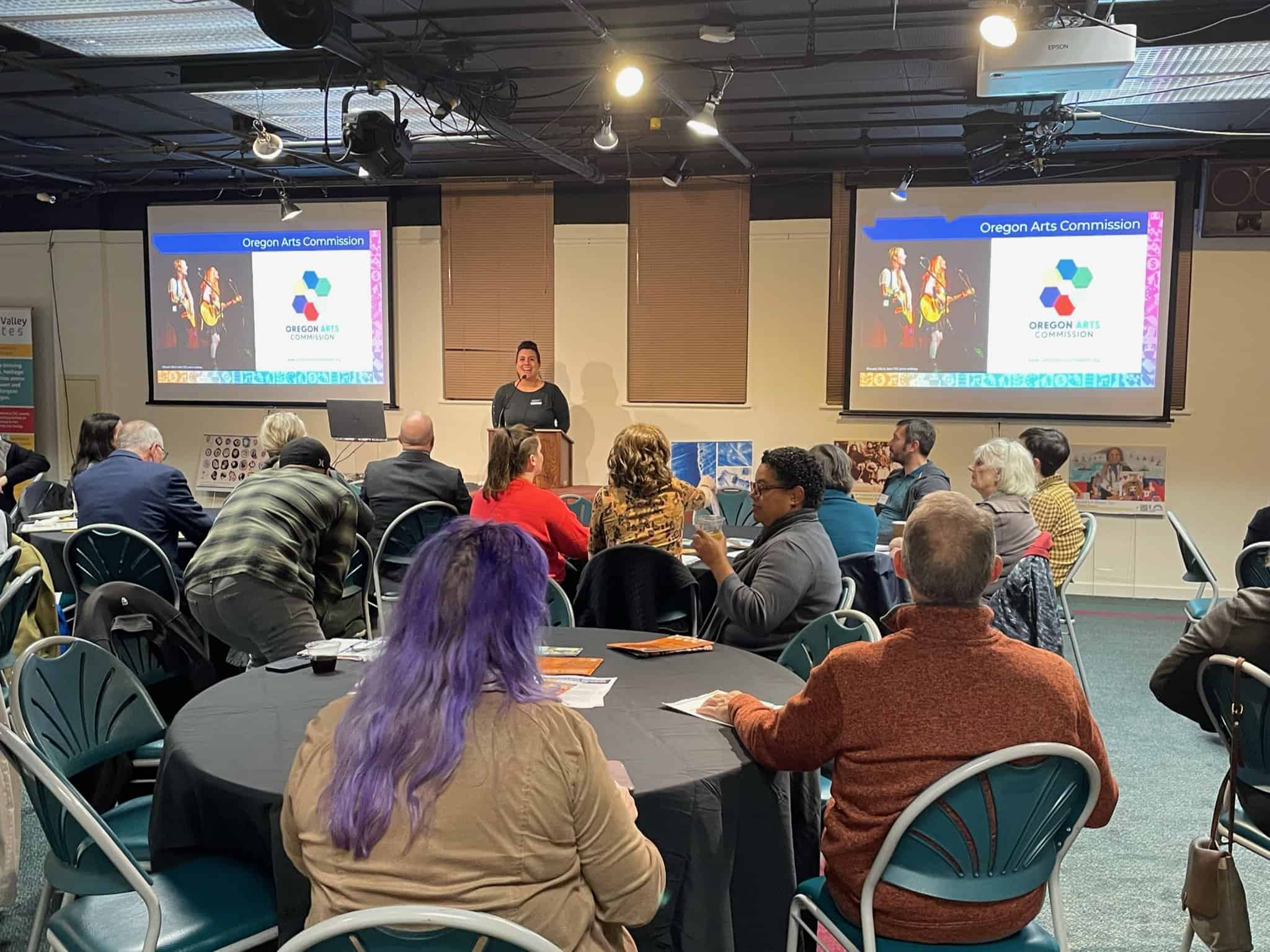On Thursday, June 12th, Multnomah County adopted a budget that included a $300,000 cut to the Regional Arts & Culture Council’s (RACC) core county community program funding. These cuts are the result of Amendment #11 to the Chair’s proposed FY26 budget, reallocating funds from Program 10200—RACC’s primary County-based funding source—to other County services.
While we recognize the difficult decisions facing our County leaders, we must also speak plainly about what this reduction means: fewer programs, less support, and lasting impact on community access to the arts.
RACC has served as Multnomah County’s designated arts and culture agency. Through leadership, advocacy, and grantmaking, we work to ensure that public investment supports a thriving, equitable cultural ecosystem. This loss of County support has real consequences for the services we provide.
What Will This Budget Cut Impact?
Direct Community Funding
Last year in FY24, RACC awarded $214,000 in Multnomah County funded grants to 54 community-based projects across our service area. These ranged from arts in public parks and classrooms to BIPOC artist retreats and cultural festivals.
Public Art Stewardship
RACC manages over 1,000 pieces in the County’s public art collection. Cuts reduce our capacity to care for, rotate, and restore this vital public asset.
Advocacy & Access
County funding supports RACC’s regional advocacy, policy leadership, and outreach to ensure arts and culture remain a core part of community well-being. Less funding limits our ability to keep Multnomah County’s creative community at the table.
Professional Development Grants
This year, 57 artists and creatives received support through our professional development grants with Multnomah County funding, helping them grow small businesses and gain skills. These grants were made possible by $90,000 in County support, which is now unavailable.
We know many of you—artists, residents, organizations, businesses—want to help. Here’s how:
How You Can Support Now
Make a Donation
Every dollar helps offset this cut and restore programs for the people and places that need them most. Donate to RACC.
Share Your Story
Let us know what RACC’s support has meant for you or your organization. Submit a 30-second vertical video testimony here. Need a prompt? Answer one the following questions in your testimony:
- Have you or your organization ever received funding, a commission, or attended a workshop provided by RACC? How and why did you choose us in particular?
- What were their/your expectations about working with us? Has the experience you’ve had with RACC measured up to your initial expectations?
- What problems, if any, did we (or are we still) helping you or your organization with through our programming?
Show Up
Civic engagement matters. Look for more conversations to come—about values, investment, and vision for the region.
Arts and culture don’t belong to one county, one agency, or one moment. They belong to all of us. And they need all of us—especially now. Thank you for standing with us and for helping carry this work forward!





